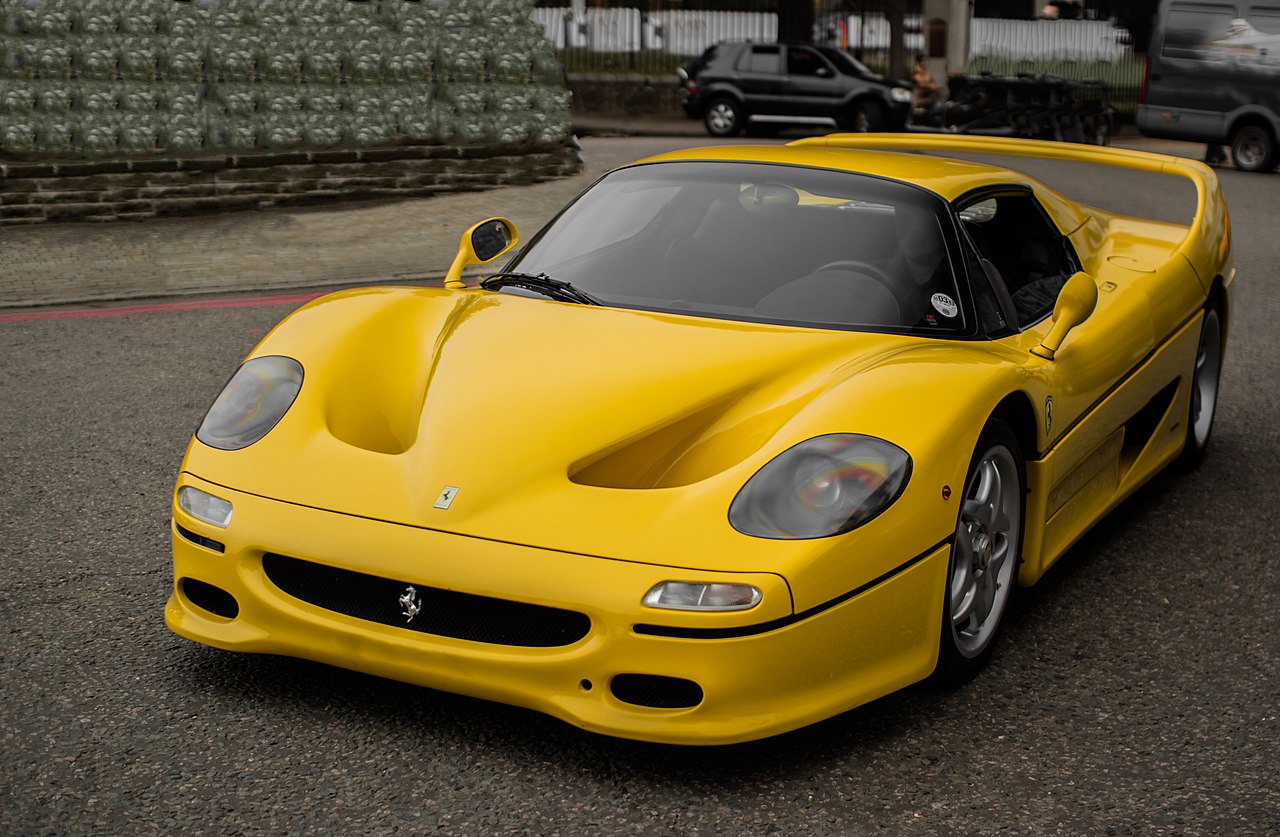
The sound of pens scratching at checkbooks could be heard during the introduction of the Ferrari F50 on this day in 1995 at the Geneva Motor Show. Perhaps that isn’t entirely true, given only 349 left the assembly line between 1995 and 1997, but it certainly left many mouths agape. Powered by a 512 horsepower 4.7 liter, 60 valve V12 engine connected to a six speed gated transmission, the car reached a top speed of 202 miles per hour, one more than its predecessor, the Ferrari F40. The now iconic supercar originally sported a sticker price of about $450,000. Today, expect to pay upwards of $3 million for this rare Ferrari.
This Ferrari is the closest model to a street legal F1 car the Italian automaker had built to date. Inspired by Alain Prost driving the Ferrari 641, the car came from the factory devoid of any creature comforts. Instead, the car relies entirely on driver control for an ultimate purist driving encounter. The lack of power-steering, anti-lock brakes or power brake-assist intentionally simulates the experience of driving a Formula One race car. How else could Ferrari celebrate it’s 50th anniversary?

Ferrari F50 GT
In the spirit of the F40 LM, engineers developed the Ferrari F50 GT as marque’s race-ready version of the road going sports car. However, it never saw the track due to project cancelation. Had it met the pavement, it would have brought nearly 739 horsepower with it. Of the three chassis built, two received bodies and went to market while the third reportedly met the crusher.

The 50th anniversary of Ferrari came in 1997, with the last F50 rolling out of the Maranello, Italy factory in July of that year. Of the 349 built, 302 were Rosso Corsa (red), 31 were Giallo Modena (yellow), 8 were Rosso Barchetta (dark red), 4 were Argento Nurburgring (silver), and 4 were Nero Daytona (black). The Enzo Ferrar succeeded the Ferrari F50 with production starting in 2002.





















